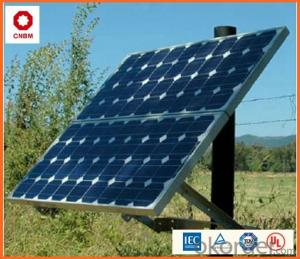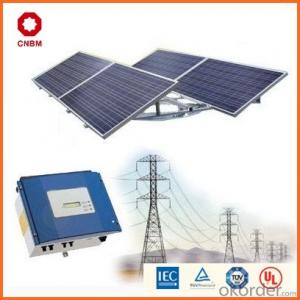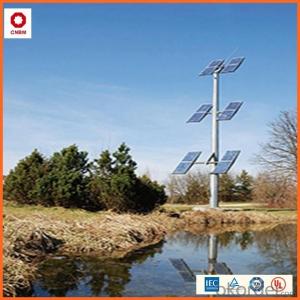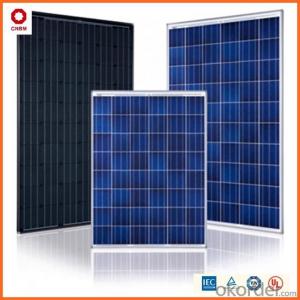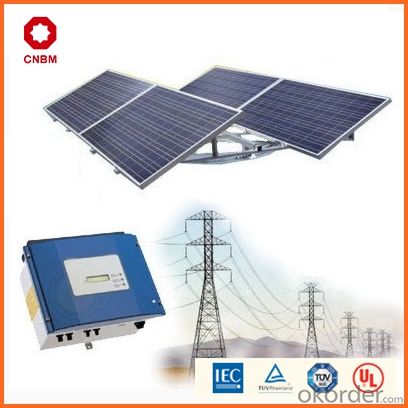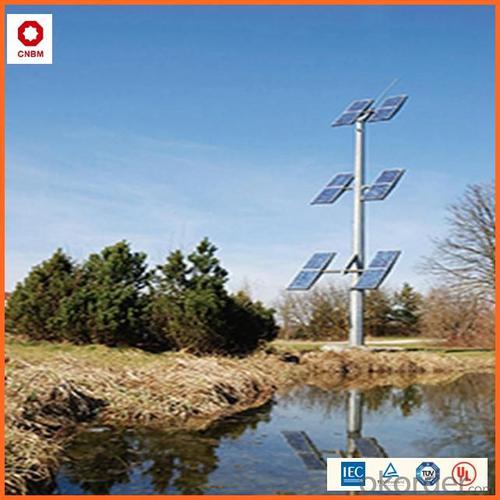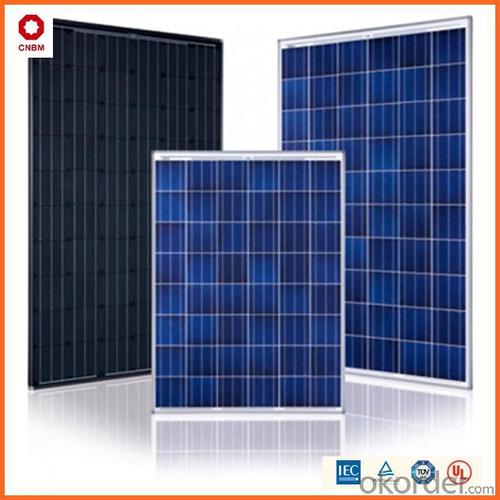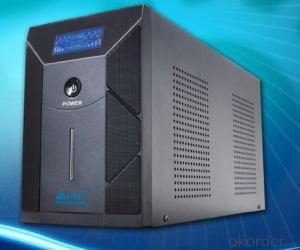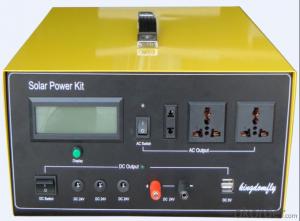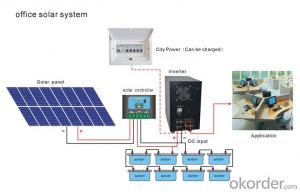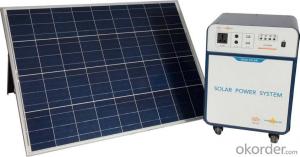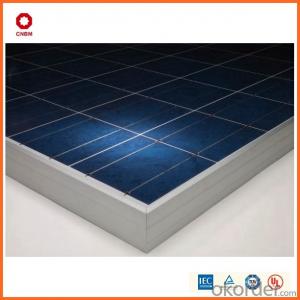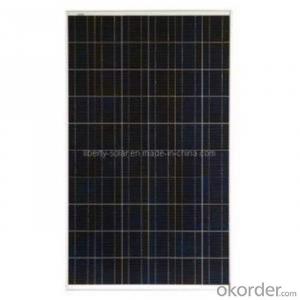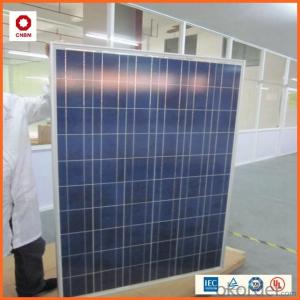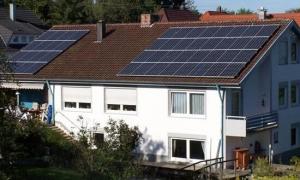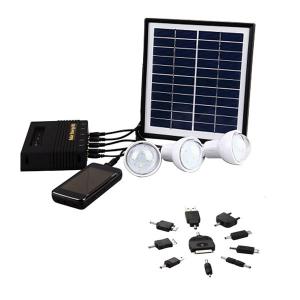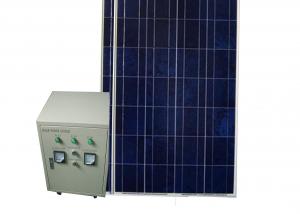85W Poly Off Grid Solar Energy Systems Small Solar Panel - Good Quality
- Loading Port:
- China main port
- Payment Terms:
- TT OR LC
- Min Order Qty:
- 1 watt
- Supply Capability:
- 10000000 watt/month
OKorder Service Pledge
OKorder Financial Service
You Might Also Like
Specification
Hot Sale !!! Quality and Safety of Small Poly Solar Panel 25~85w
1. Rigorous quality control meets the highest international standards.
2. High-transmissivity low-iron tempered glass, strong aluminium frame.
3. Using UV-resistant silicon.
4. IS09001/14001/CE/TUV/UL
Warranties of Small Poly Solar Panel 25~85w
1. 10 years limited product warranty
2. 15 years at 90% of the minimal rated power output
3. 25 years at 80% of the minimal rated power output
Specification
Characteristics of Poly solar panels CNBM (25-85W) | |||||
Max Power Voltage Vmp(V) | 30.3 | 30.8 | 31.1 | 31.4 | 31.85 |
Max Power Current Imp(A) | 7.60 | 7.64 | 7.73 | 7.81 | 7.85 |
Open Circuit Voltage Voc(V) | 36.1 | 36.6 | 37 | 37.3 | 37.68 |
Short Circuit Current Isc(A) | 8.50 | 8.55 | 8.65 | 8.75 | 8.85 |
Max Power Pm(W) | 230W | 235W | 240W | 245W | 250W |
Temperature Coefficient of Cells Poly solar panels CNBM (25-85W) | |
NOCT | 45± 2 |
Temperature Coeffucients of Isc | 0.0492 |
Temperature Coeffucients of Voc | -0.3374 |
Temperature Coeffucients of Voc | -0.4677 |
Mechanical Data of Poly solar panels CNBM (25-85W) | |
Dimension | 1638 × 982 × 40 mm |
Weight | 19.5 kg |
No. of Cells and Connections | 60 (6 ×10) |
Tolerance | 0 ~ + 5 W |
Cell | Monocrystalline Cell 156 × 156 mm |
Packing | 624 Pcs/40ft(H) Container |
Limits of Poly solar panels CNBM (25-85W) | |
Operating Temperature | -40 to +85 |
Storage Temperature | -40 to +85 |
Max System Voltage | 1000VDC(IEC) / 600VDC(UL) |
Features of our products:
• High conversion efficiency mono/poly-crystalline amorphous silicon solar cells
• Modules incorporate high performance bypass diodes to minimize the power drop caused by shading
• High transmittance, low-iron tempered glass
• High performance EVA encapsulant to prevent destroying and water.
• AI frame: without screw, corner connection. 8 holes on the frame can be installed easily
• Good performance of preventing from atrocious weather such as wind and hails
• Certifications: CE IEC TUV VDE UL, Class I
• 10 years 90% power output warranty
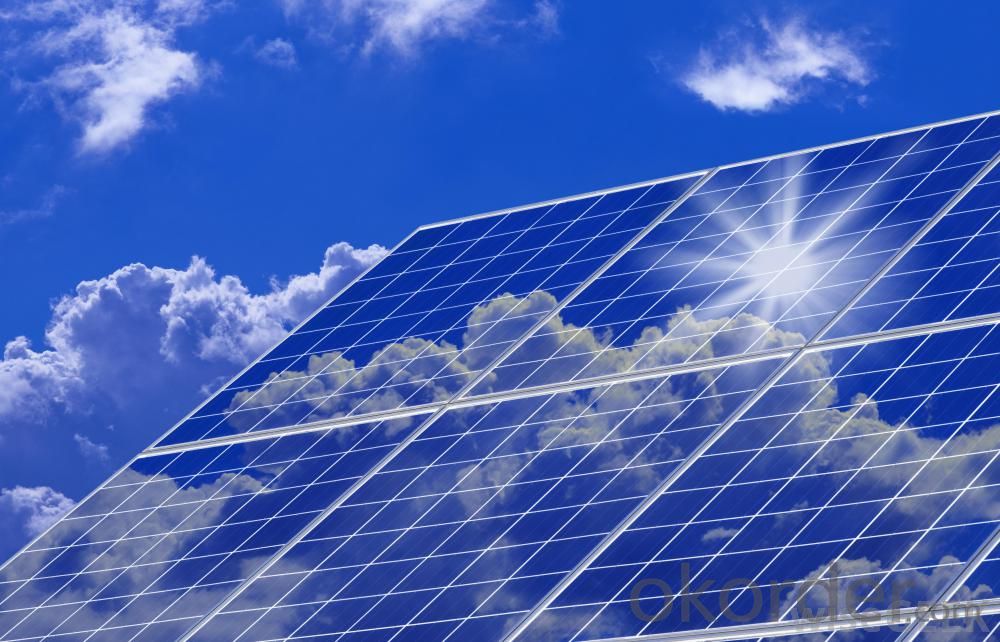
Shipping of Small Poly Solar Panel 25~85w
By Sea | Delivery from Shanghai or Ningbo seaport |
By Air | Departure from Shanghai Pudong Airport |
By Express | Post by DHL, EMS, UPS, TNT. |
- Q: Can solar energy systems be used to power large industrial facilities?
- Yes, solar energy systems can be used to power large industrial facilities. Advances in solar technology and the availability of large-scale solar installations make it feasible to generate significant amounts of electricity to meet the energy demands of industrial facilities. Additionally, the use of solar energy can help reduce carbon emissions and provide long-term cost savings for these facilities.
- Q: Can solar energy systems be used in areas with high levels of windborne debris?
- Solar energy systems can indeed be used in areas with high levels of windborne debris. Although there is a risk of damage or obstruction to solar panels from windborne debris like tree branches or other objects, there are ways to address these concerns. A common approach is to install protective measures such as wire mesh screens or barriers around the solar panels. These screens allow sunlight to pass through while shielding the panels from potential damage caused by debris. Furthermore, optimizing the design and mounting of solar panels can enhance their ability to withstand high winds and debris. By installing panels at an angle that allows debris to slide off, accumulation can be prevented. Additionally, reinforcing mounting systems ensures stability during strong winds. Regular maintenance and cleaning of the panels are also crucial in areas prone to windborne debris. This practice eliminates any accumulated debris, guaranteeing optimal efficiency. It is important to note that the advantages of solar energy, including its environmental friendliness and cost-effectiveness, often outweigh the potential risks associated with windborne debris. With careful planning, installation, and maintenance, solar energy systems can be effectively utilized in areas with high levels of windborne debris.
- Q: Can solar energy systems be used for powering refrigeration systems?
- Yes, solar energy systems can be used for powering refrigeration systems. Solar-powered refrigeration systems, known as solar refrigerators or solar coolers, use photovoltaic panels to convert sunlight into electricity which can be used to power the refrigeration process. These systems are commonly used in off-grid areas or remote locations where access to electricity is limited or expensive. They offer a sustainable and environmentally friendly solution for refrigeration needs.
- Q: How does a solar energy system connect to the electrical grid?
- A solar energy system connects to the electrical grid through a process called net metering. This involves installing a bi-directional meter that measures both the electricity consumed from and generated by the solar panels. When the system produces excess electricity, it is fed back into the grid, and the owner receives credits for the surplus energy. When the system doesn't generate enough power, electricity is drawn from the grid. This two-way flow enables seamless integration of solar energy into the existing electrical grid infrastructure.
- Q: Can solar energy systems be installed on airports or transportation hubs?
- Yes, solar energy systems can be installed on airports or transportation hubs. In fact, many airports around the world have already embraced solar power as a clean and sustainable energy source. These systems can be installed on rooftops, parking lots, or even as ground-mounted arrays near the facilities. Solar energy can help airports and transportation hubs reduce their carbon footprint, lower energy costs, and contribute to a greener and more sustainable future.
- Q: What is the average cost of a solar panel system?
- The average cost of a solar panel system can vary depending on various factors such as the size of the system, the type and quality of the panels, installation costs, and any additional equipment needed. On average, a typical residential solar panel system can cost between $15,000 to $25,000 before any potential government incentives or rebates. However, it is important to note that the cost of solar panels has been decreasing over the years due to advancements in technology and increased competition in the market. Additionally, the long-term benefits of solar energy in terms of reduced electricity bills and environmental sustainability often outweigh the initial investment cost. It is recommended to consult with a solar panel installation company to get a more accurate estimate based on your specific needs and location.
- Q: Can a solar energy system be installed on a warehouse or industrial facility?
- Yes, a solar energy system can be installed on a warehouse or industrial facility. In fact, these types of buildings often have large roof spaces or open areas that are ideal for installing solar panels. This can help the facility reduce its dependence on traditional energy sources, lower electricity costs, and contribute to a more sustainable and environmentally friendly operation.
- Q: Can solar energy systems be integrated into building materials, such as solar roof tiles?
- Solar energy systems can indeed be incorporated into building materials, and one popular instance of this is the utilization of solar roof tiles. These tiles, also referred to as solar shingles or solar slates, have been meticulously designed to resemble conventional roofing materials while simultaneously harnessing solar energy. Constructed with photovoltaic cells that convert sunlight into electricity, these specialized tiles have numerous advantages over traditional solar panels. One of the primary benefits of solar roof tiles is their seamless integration with a building's overall aesthetics, resulting in a more visually appealing structure. This harmonious blend into the building's structure allows for a more cohesive design, particularly in regions where stringent architectural guidelines are in effect. Moreover, solar roof tiles can be installed on both new and existing buildings, providing a flexible and adaptable solution. Another advantage of solar roof tiles lies in their ability to generate electricity while exhibiting durability and resistance to harsh weather conditions. These tiles are specifically designed to withstand various elements, including rain, snow, and wind. Additionally, solar roof tiles are typically manufactured using high-quality materials, ensuring a longer lifespan compared to traditional roofing materials. The integration of solar energy systems into building materials, exemplified by solar roof tiles, offers a multitude of benefits. Not only do they generate clean and renewable energy, but they also contribute to reducing reliance on fossil fuels and decreasing carbon emissions. Additionally, solar roof tiles can assist in reducing energy costs by generating electricity on-site, enabling homeowners and businesses to achieve greater energy independence. In summary, solar energy systems can indeed be incorporated into building materials, and solar roof tiles serve as a prime example of this. With their visually appealing appearance, durability, and capacity to generate energy, solar roof tiles present a promising solution for harnessing solar power while simultaneously preserving the architectural integrity of a building.
- Q: Can solar energy systems be used for powering off-grid research stations in Antarctica?
- Yes, solar energy systems can be used for powering off-grid research stations in Antarctica. Solar panels can be installed to capture and convert sunlight into electricity, which can then be stored in batteries for use during periods of low or no sunlight. This renewable energy source can provide a reliable and sustainable power supply for the research stations, reducing the dependence on fossil fuels and minimizing environmental impact.
- Q: Can solar energy systems be used for powering electric boat charging stations?
- Yes, solar energy systems can be used for powering electric boat charging stations. Solar panels can be installed on the charging station's roof or nearby to harness sunlight and convert it into electricity. This renewable energy source can then be used to charge electric boats, making the charging process eco-friendly and sustainable.
Send your message to us
85W Poly Off Grid Solar Energy Systems Small Solar Panel - Good Quality
- Loading Port:
- China main port
- Payment Terms:
- TT OR LC
- Min Order Qty:
- 1 watt
- Supply Capability:
- 10000000 watt/month
OKorder Service Pledge
OKorder Financial Service
Similar products
Hot products
Hot Searches
Related keywords
